Author: BITKRAFT Ventures; Compilation: Zen, BlockingNews
TL;DR
Although the rise of Web3 and blockchain technology has created many opportunities for game design, game development, and digital asset ownership, the fundamental problem to be solved in user acquisition (UA) remains the same: maximize player lifetime value (LTV) while minimizing customer acquisition cost (CAC).
However, the ability to accurately measure this relationship has changed, and in the decentralized world, both sides of the equation are becoming increasingly blurry:
- Deep dive into a16z’s active address comments: user and usage growth stagnate, short-term not optimistic
- Interpreting the LSTFi project’s unshETH
- Counterattack! Several senior developers refute some unfounded criticisms against the Move blockchain
-
CAC is often measured in traditional games in terms of cost per installation (CPI), which is much more difficult to calculate accurately. Many Web3 games are currently web-based games, which means that no installation is required.
-
“Value” in Web3 games is more difficult to quantify than in traditional games, and LTV ROI may differ greatly from standard benchmarks.
-
Identifying players can be challenging, as players may have multiple wallets, and wallet addresses associated with game data may actually be bots rather than humans. Using wallet addresses rather than specific users as a reference for LTV and CAC is risky and difficult to predict accurately.
Traditional marketing methods have not been very effective in Web3 games, at least not yet, and this approach is challenging and relatively underdeveloped. This puts Web3 games in a completely unfair competitive environment compared to web2 games. Even if a powerful Web3 game is ready to invest heavily in performance marketing, macro resistance to such strategies can make them extremely expensive and largely unsuitable for early-stage venture capital, especially since many of these companies may still be developing their first game.
However, there are still opportunities for savvy operators who can combine thoughtful data analysis with innovative, cryptonative marketing strategies. By focusing on three key areas (community, partnerships, and Web3 native growth), founders can promote user acquisition in an economically efficient and Web3-friendly manner.
Although measuring LTV and CAC in Web3 is difficult, game companies should prepare for the case where performance marketing becomes the dominant strategy again. Now, blockchain game companies can take several steps to prepare for the future.
Introduction
Blockchain technology has introduced the game industry, causing many founders and industry practitioners to rethink old business methods. Almost every aspect of the “traditional” game industry, from design, development, to release, and everything in between, is being analyzed and rebuilt to best meet the needs of new games, users, and studios forming around the emerging Web3 game ecosystem.
User acquisition (UA) is no exception, lagging behind other sectors of the game industry in adapting to Web3 in some ways. So far, most of the development and investment activity surrounding blockchain games has focused on Pre-Seed, Seed, and A-round venture capital. At this stage, most companies are still developing their first game and are not yet ready to expand to a large number of users through traditional performance marketing.
Blockdata reports that by 2022, 60% of blockchain game transactions will be in the early stages, and another 17% will enter the A-round. Considering that developing a game worth expanding takes time, Web3 game user acquisition has received little attention so far. In this article, BITKRAFT will outline the challenges related to Web3 game user acquisition, provide practical advice for companies in this field, and point out opportunities in investment, user acquisition, and internal development.
Throughout this article, BITKRAFT will refer to the terms “user acquisition” or “UA” as brand marketing (essentially more qualitative) and performance marketing (usually more quantitative). In the environment of traditional games, especially mobile games, UA usually only involves performance marketing functions. However, performance marketing is not suitable for most Web3 game operations, at least not now, and blockchain games still need to acquire users through other less precise methods.
Basic challenges of UA
Fundamentally, the effectiveness of user acquisition can always be traced back to the same basic relationship: player lifetime value (LTV) vs user acquisition cost (CAC). As long as the player’s lifetime value exceeds the cost of acquiring that player, profit will shift and UA efforts will be considered successful.
Of course, it’s not that simple in practice.
For example, users may play a game for weeks or months before deciding to spend money. The cost per install (CPI) – the most commonly used CAC metric in games – fluctuates over time and depends on platform, market conditions, genre, and many other factors. In addition, operating games and keeping players in the ecosystem requires ongoing costs.
Regardless, the basic strategy of maximizing LTV while minimizing CAC applies to all game businesses in both traditional and Web3 gaming fields. This relationship has not changed.
However, as we will discuss shortly, there are some key assumptions behind this truth in the Web3 environment that no longer apply, forcing savvy operators to seek new solutions.
Key Assumptions
Founders with experience in marketing or user acquisition in the traditional gaming field should be familiar with the following:
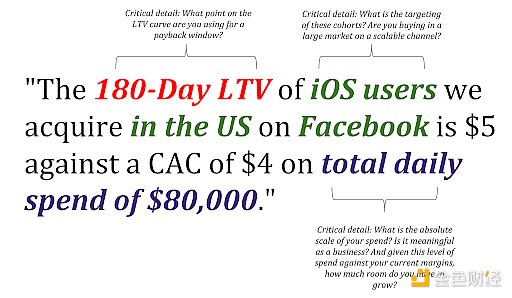
This highly specific approach makes traditional user acquisition more scientific than artistic. Marketers and user experience practitioners can input the above information into a spreadsheet and predict the LTV-CAC relationship over time, quickly evaluating the commercial viability of a specific game business.
However, to acquire users so precisely, we must first understand them.
In the traditional gaming environment, users are relatively easy to identify – they are independent users installed on specific devices. In the example above, we know they are playing games on iOS, reside in the United States, and have been exposed to some Meta Audience Network content.
Although there may be some errors, such as multiple users sharing the same device, or one user playing the game on multiple devices, we can still link a specific device to a series of behaviors we observe in the game and attribute that user to the channel they arrived at our game.
In the world of Web3, we can no longer make such direct assumptions.
Although all games distributed through traditional channels such as mobile app stores, PC publishing platforms, and console networks can theoretically benefit from the data pipelines frequently used by UA professionals, mixed factors such as wallet ownership and platform policies make this process less straightforward.
Wallet Ownership:
As Web3 games require encrypted wallet connections to take advantage of the benefits provided by blockchain integration, game companies need to be able to directly attribute wallets to players. However, given that a user may have multiple wallets, this can be challenging.
Additionally, the contents of any given wallet may change over time — NFTs and other tokens may come and go, asset values may fluctuate, and some assets may not even belong to the wallet holder at all (for example, in the case of NFTs that are scholars or rentals). This makes it difficult to accurately estimate LTV based solely on wallet contents.
Wallets also obscure user identities, making it more difficult to effectively target advertising to them. In fact, these wallets may not be operated by humans at all, but rather by bots or AI. Wallets controlled by bots may even have negative LTVs, as bots are a common means of maximizing value extraction in Web3 games.
Platform Strategies:
Most traditional game distribution platforms are hesitant about allowing blockchain integration or the use of NFTs. At the time of writing, any NFT sales on iOS or Android devices must be completed through in-app purchases, with Apple and Google taking a 30% revenue split. Platform owners also impose restrictions on using NFTs to unlock content, effectively limiting their use cases.
Console manufacturers have sent mixed signals about blockchain games: on one hand, issuing cautious statements to the public, and on the other hand, quietly exploring the field through investments and R&D. On the PC side, Valve has issued a ban on NFTs and blockchain games altogether, while its competitor, the Epic Games Store, has welcomed them and already offers some blockchain games.
All of this uncertainty, coupled with a lack of mature back-end publishing infrastructure to support Web3 integration, has led many Web3 founders to focus their projects on browser-based experiences, where wallet integration has exploded. Browser-based games do not require installation or downloading, which renders standard game CAC per install cost metrics useless. Even if wallets can be attributed to specific acquisition channels, players can easily connect and disconnect wallets at will. If a player connects a wallet but does not make any transactions, can an enterprise really consider that player “acquired?”

To summarize:
-
If we can’t accurately measure LTV…
-
We can’t reliably measure CAC…
-
…can we really optimize user acquisition?
It’s also worth considering that even in the best case, user acquisition is difficult. With the changing Apple ATT policy, user targeting has become even more challenging, and changes in global privacy regulations have made the issue even more complex. Even if done well, the cost of user acquisition is still very high (especially in free games):
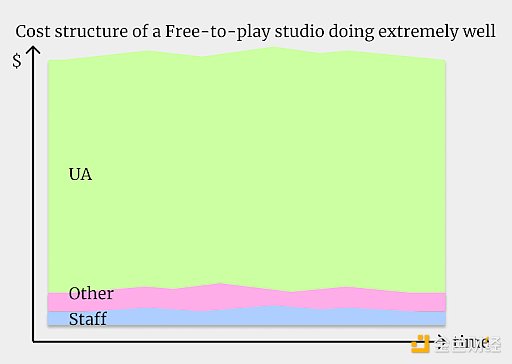
Even if a Web3 game is ready to expand to a wider audience (i.e. non-crypto native users), it will operate in an unfair competitive environment with non-Web3 games that do not face challenges such as user login, installation attribution, LTV tracking, or platform policies, and have years of historical UA data for predictive purposes.
Therefore, traditional performance marketing is largely unwelcome, unless it is the most highly developed and well-funded Web3 project, and/or those with minimal integration with Web3.
From the perspective of the traditional gaming industry, this seems to be a challenging environment for startups. However, Web3 also demonstrates its unique user acquisition opportunities, which can be utilized by businesses of all sizes—we will further explore this topic in the next section.
Practical UA advice for founders
In the absence of reliable LTV and CAC benchmarks, Web3 founders should prioritize low-cost, crypto-native solutions for user acquisition. Fortunately, for savvy marketers who understand the Web3 user base and are willing to depart from traditional gaming methods, there are multiple options to choose from.
Leverage player communities
Given the bottom-up nature of Web3 game development, starting from your game’s current community is a constructive and cost-effective starting point. Early community members can be likened to the “golden group” of traditional games, as they can be incentivized through crypto-economic adjustments. These early adopters will become your game’s greatest advocates and biggest consumers.
As an early contributor to your game ecosystem, a token holder in your Genesis series, or even a speculator looking for the “next big thing,” community members have a vested interest in raising awareness of your project and attracting new users to your game. While economic benefits or earning potential may be the primary motivation for some of these players, many others may enjoy the opportunity to participate in community-driven development. Low-cost community-building efforts, such as art contests, game story writing, friend referral programs, among others, are effective tools for strengthening community power. When combined with the endowment effect that Web3 native initiatives bring (free NFT minting, token distribution, allowing listing points, etc.), players can have a greater sense of ownership over the game ecosystem they are involved in.
Empowering these “co-owners” to play an active role in promoting the game can be a powerful growth strategy, and may be cheaper than hiring dedicated full-time staff to do the same job.
Content creators are particularly valuable in this regard, as they can spark conversation around your game through the social media channels that Web3 gamers frequently use, such as Telegram, YouTube, Twitch, and TikTok. By collaborating with content creators, you can tap into their followers and leverage their expertise to showcase your game to a wider audience. Another way to leverage community members is to enlist their help in sourcing and procuring potential partnerships with other Web3 communities. Most people active in the Web3 gaming community are not confined to just one Discord server. Instead, they are likely involved in multiple games, PFP projects, DeFi protocols, DAOs, and more. Allowing the community to identify other projects or communities with shared values or overlapping audiences can quickly and cost-effectively provide your team with a “warm lead” set, which may ultimately yield valuable partnerships.
Partnerships + Collaboration
According to DappRadar, as of the end of May this year, there were only over 1 million unique active wallets. Given the relatively small potential market for current Web3 gamers, another economically effective way to acquire users is to establish partnerships with communities that share your values and have already overcome the challenges of Web3 onboarding user experience.
Collaborating with other organizations can bring many benefits to your project:
-
Utilizing new networks to increase traffic to the game.
-
Gathering valuable data about overlapping or adjacent audiences.
-
Cross-promotion of marketing content, NFT drops, whitelist promotions, and more.
-
Mitigating the cost and risk of acquiring new users, as these partner communities are already primed for Web3 content.
Given the prevalence of scams and hype in the space, partner relationships can also be seen as a more organic way to promote products to Web3 audiences, who are often skeptical of traditional advertising forms. There are many choices for establishing partnerships and collaborations. One common early example is partnering with guilds. Guilds can aid in asset allocation and utilization, provide liquidity, execute marketing plans, organize esports tournaments, create content, and more. These would be good places to start the conversation, even if just to explore the realm of possibilities.
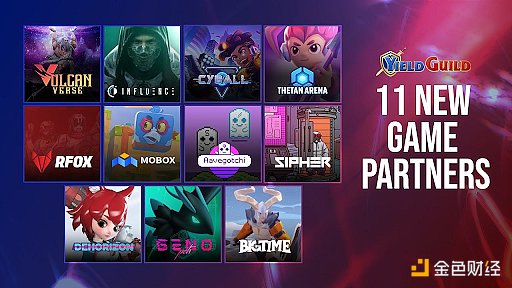
There are also other partnership opportunities in the platform and infrastructure provider space. There are countless blockchains, tech solutions, distribution and aggregation platforms, marketplaces, automated market makers, and countless other entities, all of whom have vested interests in raising awareness for Web3, particularly in the realm of Web3 gaming. Partnering with these organizations can increase the game’s visibility as well as potential ancillary benefits.
For example, partnering with marketplaces like Magic Eden or OpenSea could lead to increased trading volume, while transacting with layer 2 providers like Polygon or Immutable could unlock the potential for other game developers or those looking to establish a Web3 presence. There may even be opportunities to collaborate with other companies to save on wallet integrations or ad development, features that are beneficial for acquiring and retaining users.
Finally, one area of partnership that has seen explosive growth in recent years is game and IP partnerships. This type of transaction takes on a completely new format in Web3, where interoperability allows game assets to have multiple uses across projects. A recent standout example is the partnership between Limit Break and Castaways, though examples abound in traditional gaming as well. Partnering with other games or IPs can not only bring new audiences, but also demonstrate that the studio is capable of handling future IP integrations with confidence.
Of course, the challenge with all of the above options is finding the right partnerships for the project. The key to this work is a deep understanding of wallet data, a topic that BITKRAFT will delve into more detail in the planning and scaling section that follows.
Web3 Native Growth
Perhaps the most interesting user acquisition opportunity and space in blockchain gaming is leveraging Web3 native functionality to drive growth. These methods are unique implementations made possible by blockchain technology and therefore have virtually no precedent in the gaming world.
The most common method in this category is using airdrops and token issuance as a means of incentivizing users to participate in the project.
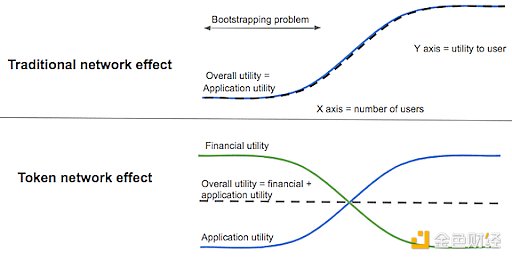
Airdrops or the distribution of free tokens to attract new users allows developers to send tokens to target wallet address lists without permission. Although this may seem like a relatively inexpensive form of marketing at first glance (the token sender only needs to pay transaction costs), its effectiveness is questionable. In multiple tests conducted by Web3 marketing firm Raleon, less than 1% of game-related airdrops were viewed by recipients, resulting in a click-through rate of less than 0.05%.
Intuitively, this makes sense – receiving an airdrop is like receiving spam from an address you’ve never registered with, only it can’t be deleted. As such, airdrop strategies should be handled carefully, with the goal of maintaining stickiness among existing players rather than acquiring new ones. If airdrops are used as rewards (e.g. for community contributions, completion rewards, etc.), then they can attract existing players, re-attract lapsed players, and potentially bring in additional word-of-mouth users. However, it is important to consider the potential value of the tokens being distributed. If the token has liquidity and significant value on public markets, then the execution cost of the airdrop suddenly becomes much more expensive when a large portion of the token supply moves away from your project.
A specific type of airdrop strategy commonly used in DeFi is called “vampire attack,” in which a new project incentivizes the conversion of valuable tokens through airdrops, thus sucking users away from established projects. This has also entered the Web3 gaming space: horse racing game MetaDerby airdropped free NFTs and $100 worth of in-game tokens to players of competing horse racing games Zed Run and Pegaxy.
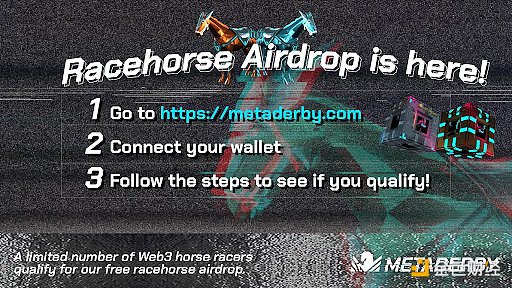
Another strategy for acquiring users that is unique to Web3 is through token issuance, including the oft-criticized “X-to-Earn” systems. While discussions of token economics are beyond the scope of this article, it can be said with certainty that incentivizing users with tokens that have potential value is an effective way to generate short-term attention, although it may only be effective in the short term. Even this temporary growth may begin to experience diminishing returns as players become savvier and customers generally become more cautious about scams and unsustainable economics.
However, token issuance need not be limited to profit schemes. Games may use token rewards as a means of maintaining player engagement, incentivizing deeper gameplay, or granting governance votes: for example, distributing tokens when a player wins a competitive match or achieves certain in-game milestones. These will be decided by smart contracts and require careful planning by the game team to avoid creating unsustainable game economies, but can serve as powerful retention mechanisms.
Scaling Strategies
While most Web3 game organizations may not be ready for large-scale effect marketing, it is important to keep an eye on the future and be prepared to adjust strategies as the industry matures and new opportunities arise. There are many steps that can be taken today to better prepare for user-driven growth tomorrow, while providing direct benefits to other marketing efforts across the entire organization.
First and foremost, before spending money on UA, it is worth taking the time to thoroughly health-check your organization’s data readiness:
-
Is telemetry enabled on the game’s onboarding flow so that you can measure progress, monitor churn, track conversions, and trigger back-end events?
-
Is the game’s funnel (a visual representation of the customer journey that describes the sales process from awareness to action) being tracked? Can you trace players from social media to Discord to your game?
-
Can data distinguish between paid and organic traffic?
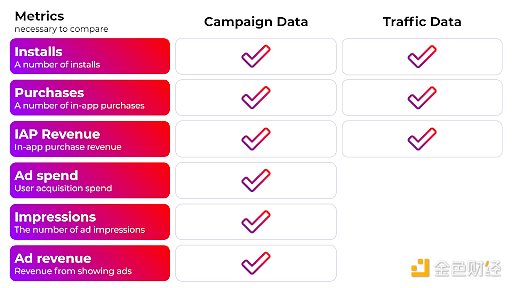
Next, understanding the unique data associated with Web3 wallets can be helpful. While wallets present their own set of challenges as mentioned earlier, they also offer interesting information that was previously unavailable in other traditional gaming scenarios. Here are some examples of unique metric types available in Web3:
-
Analysts can view assets in a given wallet and track their individual and cumulative value.
-
Wallet transactions can be parsed to check total transaction volume, transaction frequency, and average transaction value.
-
Wallet interactions can also be analyzed to visualize the network of connections between other games, dApps, and other Web3-native experiences, as well as the current purchasing power of the wallet, a given project, or shares or total value flows in/out of a given smart contract or set of smart contracts.
-
Analysts can even track wallet interaction to visualize the network of connections between other games, dApps, and other Web3-native experiences.
Finally, and most importantly, it is worth noting that no user acquisition strategy (no matter how clever) can fix a game that has inherent flaws. Developers must work hard to create fun, engaging, and memorable experiences before investing heavily in user acquisition. This is not a problem that can be solved with money alone.
Opportunity Areas
As Web3 user acquisition is an emerging field, companies have the opportunity to solve UA challenges and overcome the challenges associated with accurately measuring Web3 gameplay performance.
As mentioned above, accurately understanding UA capability in Web3 games is difficult. Market participants in the AdTech space will undoubtedly attempt to fill this gap, but traditional game attribution platforms currently lack the ability to incorporate cryptocurrency price fluctuations into their platforms. This may present an opportunity for crypto-native companies to quickly ship and stand out in the competition.
Similarly, companies operating in the Web3 identity space are also in a favorable position to improve access to trustworthy, actionable user acquisition data by aggregating different data sources in a way that benefits both players and developers. Given its technical complexity, high transaction volume, and widespread use of devices (PCs, gaming consoles, mobile devices, web browsers, etc.), gaming is an excellent testing ground for such technology. Successful implementation in gaming can be replicated more broadly in the media and entertainment space, even if not entirely replicated in other industries.
With the help of zero-knowledge identity proofing, a company may have a chance to compete with existing ad tech companies like ironSource and AppLovin in the future, if it can allow players to have better control and privacy over their data while also connecting them to the gaming industry’s UA sector to explore new ways to engage with them. The company is also a major acquisition candidate for any AAA game publisher looking to enter Web3.
By allowing users to display “game work proofs,” the need for players to showcase their identities can also be addressed, perhaps through the use of POAP or soul-binding token technology. Players with more impressive achievements can use these achievements to gain better incentives within their game ecosystem, where they may be needed. These achievements may be related to in-game achievements, but they can also be easily linked to ecosystem-building contributions such as inviting friends, writing blog posts, or participating in game testing. Players will have the incentive to participate, and game enterprises will have more actionable information to target valuable players. In fact, this may look like casino loyalty rewards, employee discount programs, or Starbucks’ “Stars” system.
Another potential opportunity is the “CRM for developers.” As more and more gaming projects launch in Web3, the need for native crypto community builders and contributors to join these bottom-up ecosystems will grow. These builders will come from different backgrounds, fulfilling various needs (software engineers, social media marketers, forum moderators, player support, etc.), and will increasingly be used as growth partners for Web3 gaming projects. For game publishers, associations, or marketing firms seeking to provide services to a growing audience of game developers, building a strong high-value contributor CRM could be a great business opportunity. Such companies can be analogous to HR firms specializing in Web3 gaming projects. There may be more opportunities beyond those listed above. Fundamentally, providing, storing, and distributing clean, actionable, and compliant data to Web3 gaming stakeholders will always be valuable, and as more users join Web3 in the future, this value will only increase.
Like what you're reading? Subscribe to our top stories.
We will continue to update Gambling Chain; if you have any questions or suggestions, please contact us!